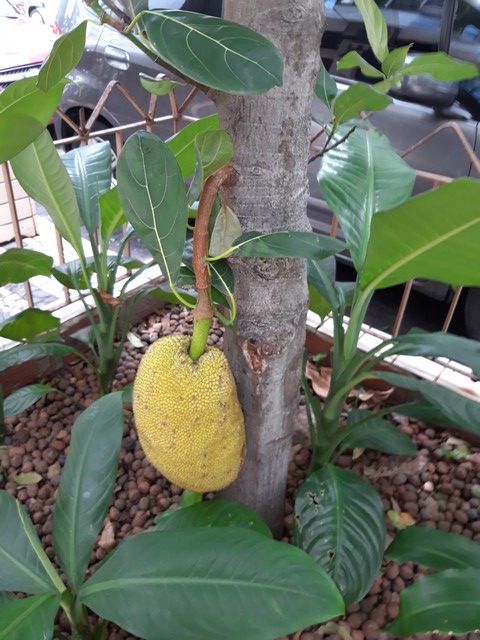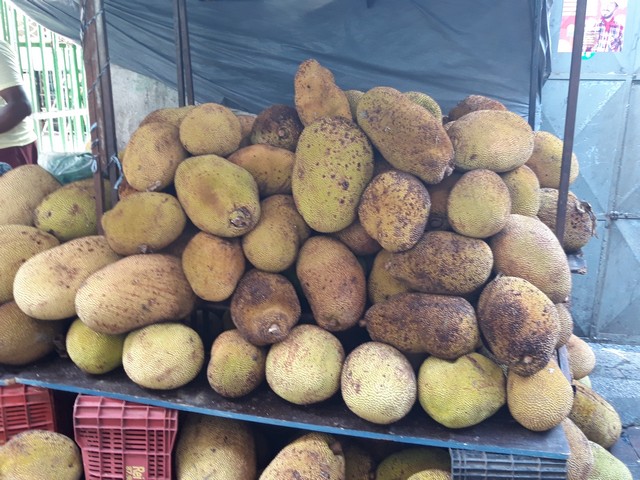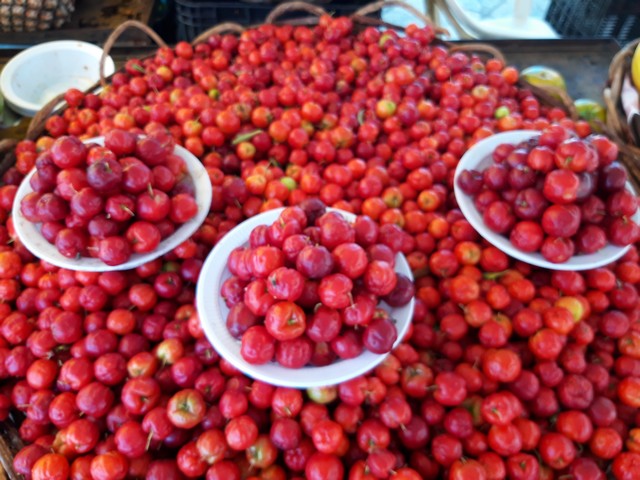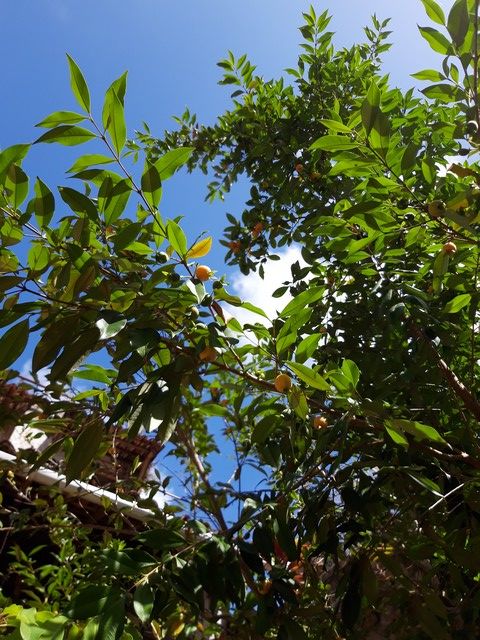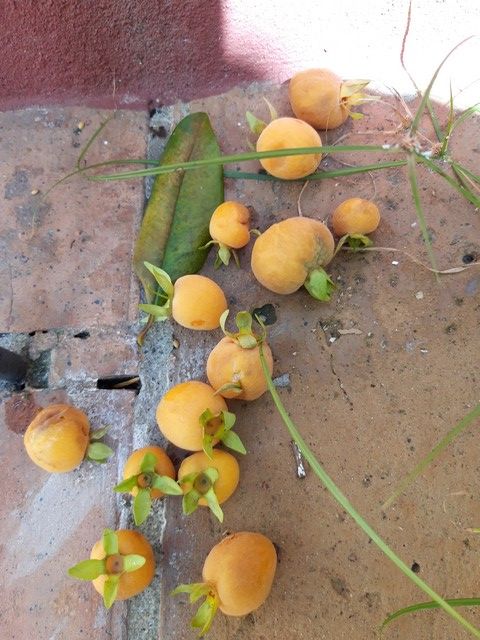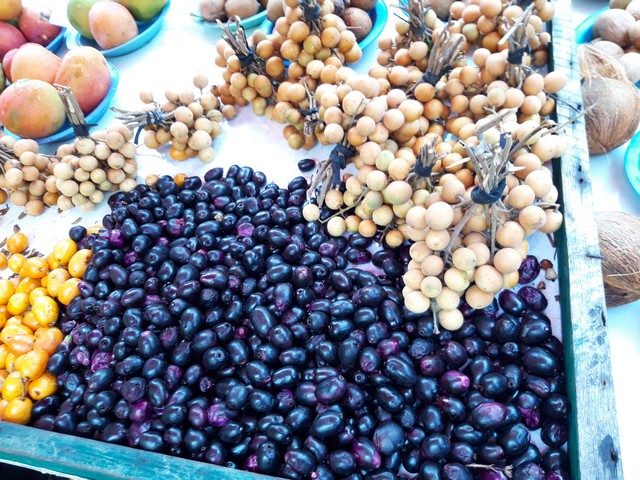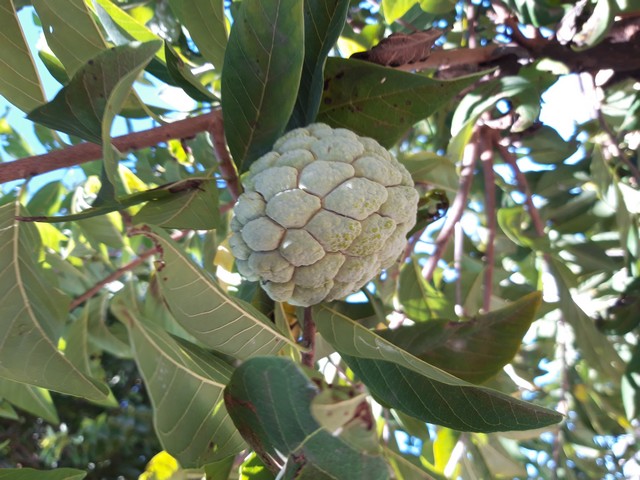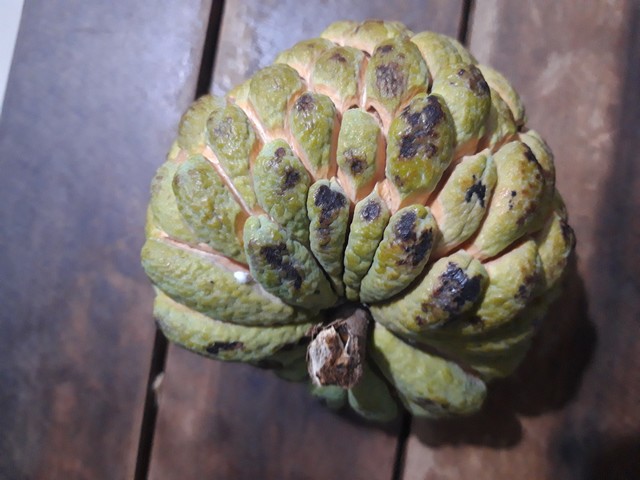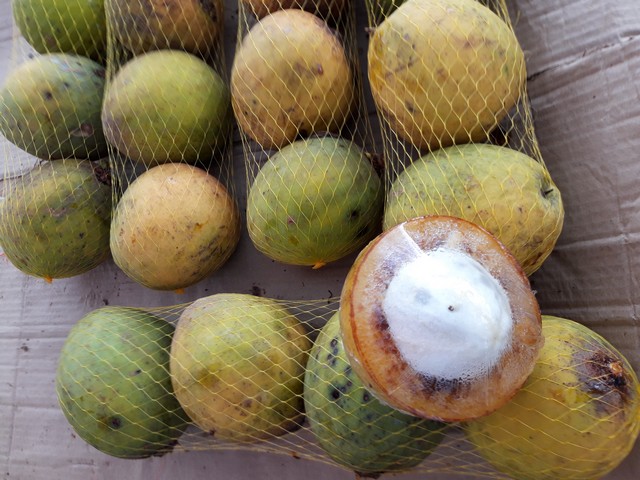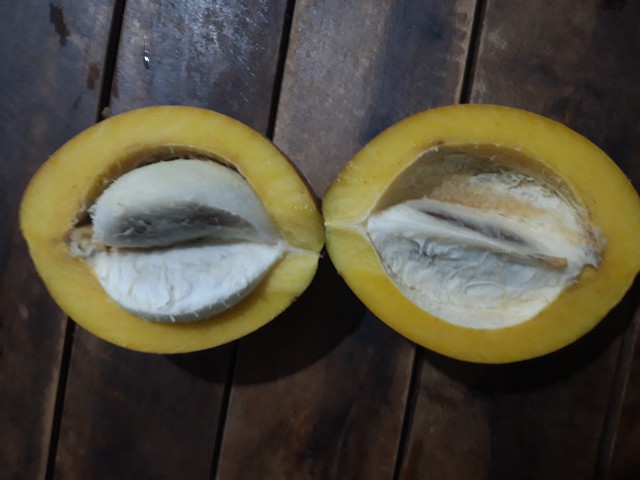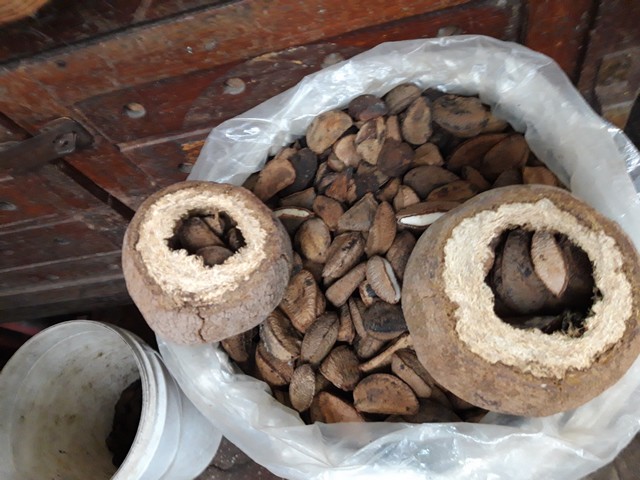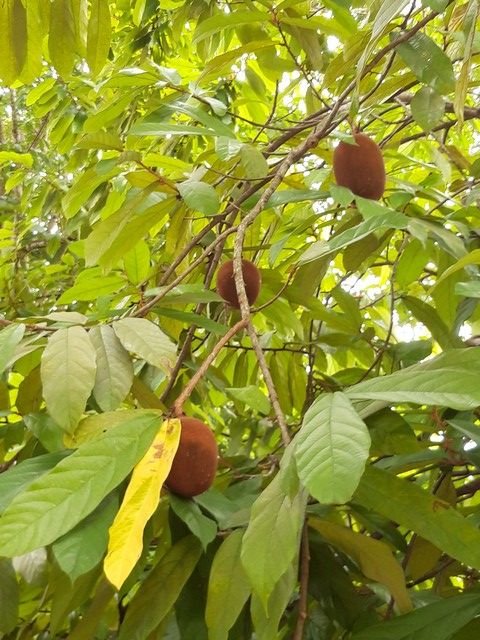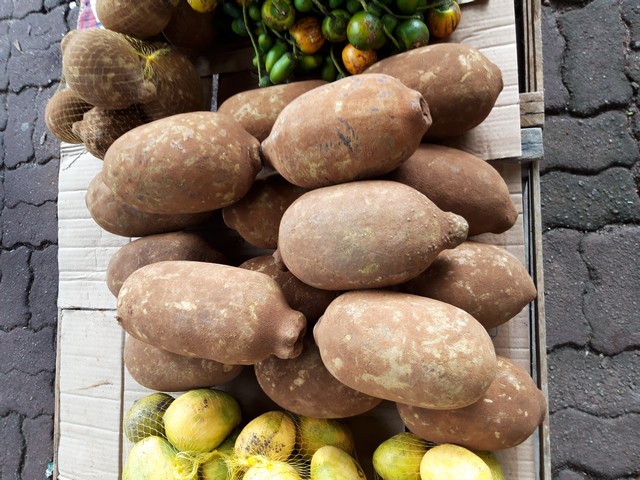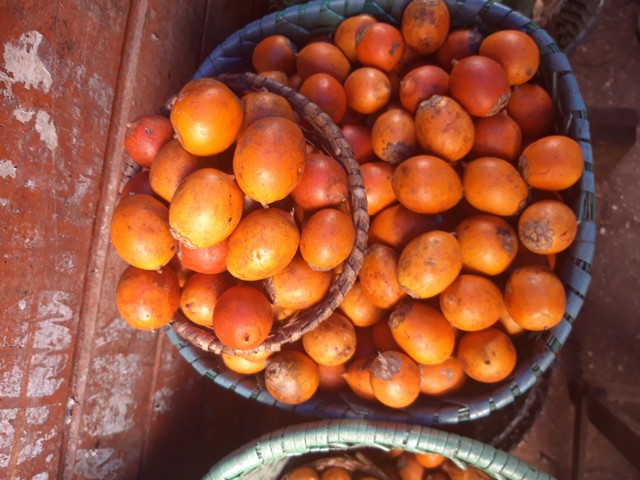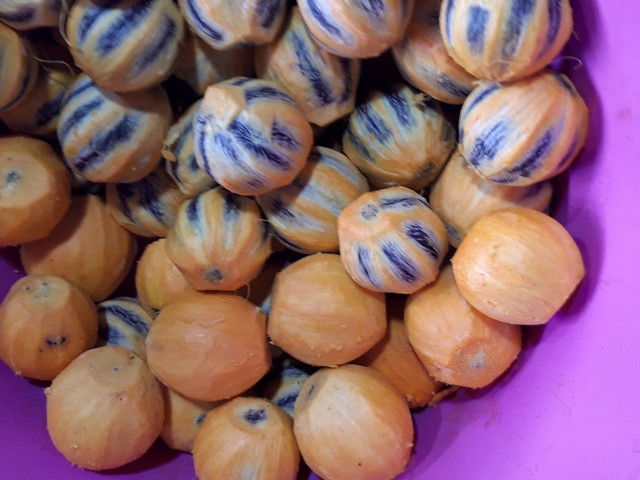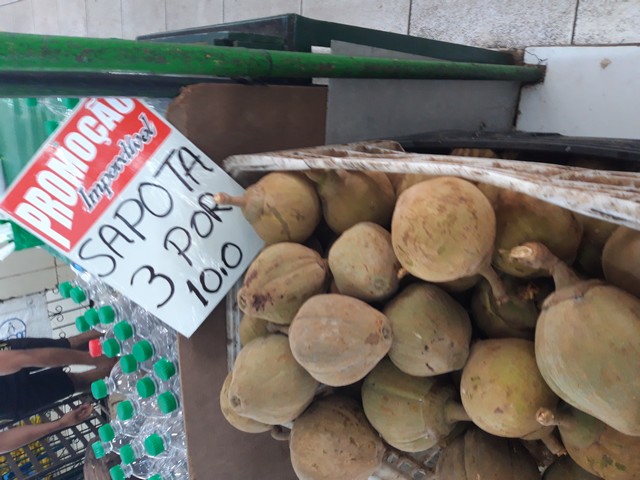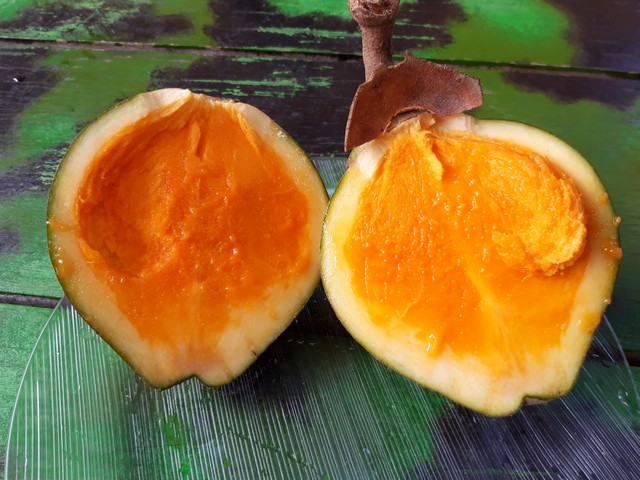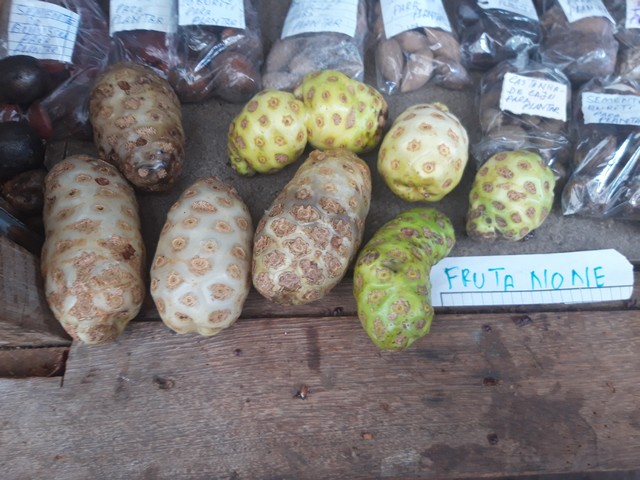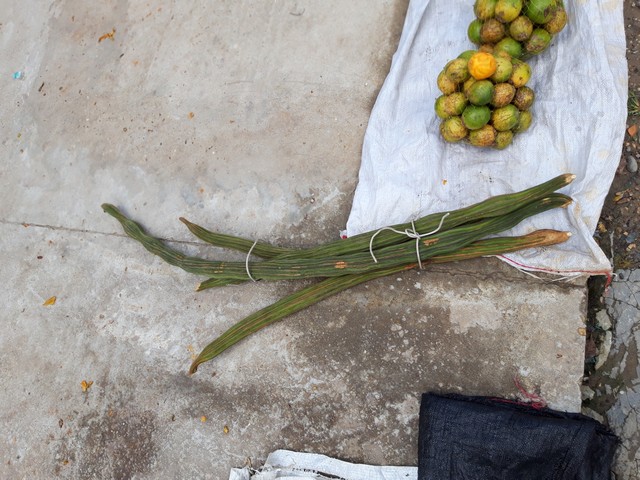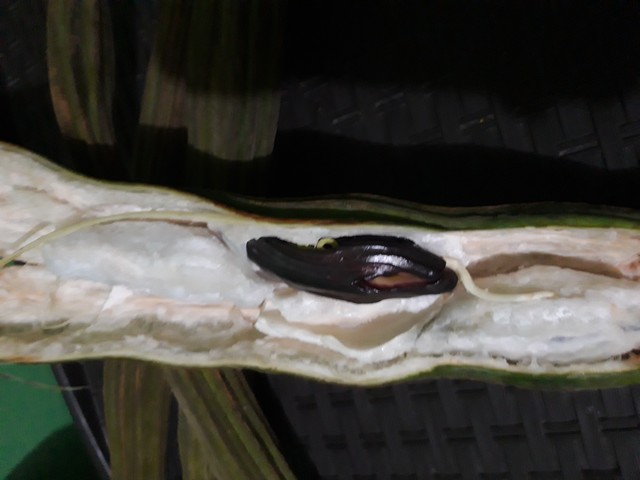Brazil might have many dark sides, but gastronomy and nature are unique experiences. And where gastronomy meets nature, the experience is doubly unique: Brazilian markets are a psychedelic experience altogether. Not so much when it comes to vegetables, but especially when it comes to fruits.
Tourist brochures promoting Brazil follow a few obvious patterns: beaches and animals with tropical forests in the background, plus Rio's Christ the Redeemer Statue stereotype and the flamboyant kitsch of the Carnival. However, no leaflets advertise the not-less-flamboyant images (devoid of the kitschy side) of the hundreds of types of fruits that you can find when traveling around Brazil.
Tourists from other continents generally start their trip to Brazil in the south of the country. São Paulo and Rio de Janeiro have the largest airports, so these are the cities where you are most likely to land. Which is good, as the incursion into the world of Brazilian fruits will be gradual. That is my case too, I land in the south and head north along the coast. In the immense city of Rio, I don't have too much time to find a proper market, but I can still find fruit shops on my way: endless shelves topped with mangoes, bananas, pineapples, guavas, passion fruit... the beginning of my fascination. I have the feeling there are too many varieties of mangoes and bananas, they look different from what I can find back home, still I would undoubtedly call them mangoes and bananas. But even if southern Brazil is a (sub)tropical area (the Tropic of Capricorn crosses the northern neighbourhoods of São Paulo metropolis), and here you can recognise most of the fruits from Mediterranean Europe, expect the unexpected! Take for example the fruit which looks like a pear with a pompon. Of course, it's not a pear with a pompon. I approach the shelf and read cashew. What the...?! Cashew?! Well, as far as I remember, cashew looks like deformed kernels. I find out that the kernel is hidden right in the hard top, and it has to be well ripe to become edible, while the 'pear' is actually the cashew fruit, which is also edible.
I don't taste the cashew fruit in Rio, because I'm too busy with guavas and passion fruit. The latter - a large, yellow variety a lot less sweet than the small, dark purple ones we can find in Europe. The name of this fruit is very tricky: passion means, in this case, ordeal, rather than ardent feelings of love. The Spanish and the Portuguese, after putting the indigenous peoples through fire, sword, spike and flu, thought about sending some missionaries to the few survivors, to educate them in Catholic catechism. In their educational attempt and fervour (sic!), they went so far as to name the plants of the genus Passiflora (which also includes the passion fruit, among many others) Flor de las Cinco Llagas / Flor das Cinco Chagas, which means Flower of the Five Stigmata. So, the name of the fruit is meant to remind us about the Passion of the Christ, not about the passion of love.
Northeast, further up the coast... Bahia - the emblematic state of Afro-Brazil. Having postponed cashew fruit, I have the occasion to do it in the city of Salvador, in the middle of the humid tropical climate. A sweet-sour taste and a relatively discreet aroma at first, which intensifies as you leave it in the room for a few days. In Salvador, first venture into the market: piles of papayas, piles of pineapples, the inevitable guavas, passion fruit... And a new arrival in the landscape: jackfruit or jaca, as the locals call it. It is sold mainly by the slice, because the fruit is large, heavy and expensive. And with some serious consistency to offer - it's not like eating a slice of watermelon. Eating a slice of jackfruit is serious business! In Europe you sometimes find it in supermarkets, ready to eat and sold by the slice.
Northeast, further up the coast... Sergipe is one of the smallest Brazilian states, with few tourist attractions. But a stop in some villages is the opportunity to discover one of the strangest Brazilian fruits, the jenipapo. Most of these names come from indigenous languages. In Tupi-Guarani, jenipapo means the-fruit-used-for-painting, because its pigments are used for tattoos. The aroma is intense, surprisingly intense, pungent, beyond pleasant or unpleasant. Apart from jenipapos, I find small trees with red cheery-like ready-to-eat acerolas. Although they resemble cherries, they are a lot sourer and have a unique flavour.
Once in the town of Olinda, new discoveries do not stop at the fruit stalls, they continue in the courtyard of my guesthouse, where I find a small tree full of yellow-orange, delicate and fragrant berries. I ask my host what they are and if they are edible. Yes, they are edible, and in Pernambuco they call them eugênias. Some fall from the tree every day. They are fragile, and the guesthouse owners collect them constantly and put them on a plate, for everyone to eat. From now on, my scientific identification research will be more and more of a challenge, because the same popular name designates several unrelated fruits or because the names differ completely from one Brazilian state to another, from one area to another. After numerous identification attempts, I tend to believe that eugênia is Eugenia luschnathiana, also called pitomba-da-baía in the state of Bahia.
Northeast, further up the coast... to the state of Ceará. The markets and stalls of Fortaleza are already overwhelming. Brazil plum, hog plum, umbu-cajá (seemingly a hybrid between the two), June plum... pure madness, pure madness! Who could understand anything of all that? Yes, they are different if you try them one after the other, but after a while everything gets mixed up in your head. Malabar plum, pitomba... I feel like I have finally found something familiar in this ocean of unknown. I mean the pitomba, bunches of dragon's eyes. I know them from Southeast Asia. But... surprise: when I open a pitomba cherry, I notice they have much less pulp than the dragon's eye and a much larger pit. I do some research and find out that it is actually a completely different fruit. It might belong to the same botanical family, but it's still a different species. Why would Brazil have a mere cultivar of the dragon's eye, when it can have its own species of dragon's eye?!
Northeast, further up the coast... to the state of Maranhão. São Luis is one of the most pleasant places in north-eastern Brazil: lots of azulejos, beautiful architecture, though some of it sadly lies in ruin, in an under-maintained UNESCO heritage site. The market lies along several streets with stalls full of fruits in all shapes and sizes, all unknown to me, the Brazilian version of One Thousand and One Nights. And there is also a covered market, with countless stalls. Loads of fruit, insanely numerous, a never-ending diversity. They overwhelmingly unfold before my eyes. Among them, one called tropical apricot, which really tastes like apricot. Bacuri - a real symbol of the state of Maranhão, sour-sweet, fragrant, of which only the white pulp around the large pit is edible. I also try the hard, yellow pulp under the skin: it is sour like a lemon. I imagine it could successfully replace the latter if you want to give an acid taste to your food. Then there is the delicious species of the Annonaceae family, of which I discover a real collection in the covered market: sweetsops, cherimoyas, atemoyas (a hybrid between the two), and soursops.
Northeast, further up the coast... the state of Pará. Belém - the place where the Amazon flows into the ocean, through something that still amazes geographers, not knowing exactly in which category to put it: a delta, an estuary or a delta-estuary. The water from the largest hydrographic basin on the planet (over 7 million km2) flows into the Atlantic Ocean with such a discharge that it gives birth to a phenomenon called pororoca, a tidal wave up to 4 metres high, which could go up the river, against the current of water, as far as 800 km inland. While I'm in Belém I don't have the opportunity to see the pororoca, but I do experience several heavy equatorial rains, famous for pouring over the city every day, invariably during the first half of the afternoon. Ver-o-Peso is the market on the river bank, with hundreds of street food, vegetables, fruits and preserves stalls. As if the covered market itself was not enough, other sellers also lie on the sidewalks, with improvised stalls or directly on the ground. Some crack Brazilian nuts and put them in small plastic bags, others shout their bananas out, others cut the thick skin of the cupuaçu fruit, to sell only the pulp. I have the feeling there are even more fruits and even more sellers than during my previous stops. I dizzily walk through the whole madness in the early afternoon, when loud thunders announce the storm. Until the rain stops, there is no point in leaving the covered market. I eventually end up in a less busy section. I discover they don't sell only fresh fruit, but also seeds for planting. In one corner I find a stall looking like Ali Baba's cave. Its guards are two cheerful and chatty elderly people, whom I will generically call grandma and grandpa. In my rudimentary Portuguese, I begin to ask what exactly each exhibit is. They immediately realize I am not from town. I tell them I have come from the South, along the coast, I want to continue my travel up the Amazon, and I am curious to discover local fruits, as I am fascinated by their diversity. That was enough to unleash a deluge of fruits passing in front of my eyes at the speed of the pouring rain outside.
Grandpa: What are you doing around here?
Me: I was visiting the market when it started pouring outside, so I'm just looking around at the stalls. You have so many fruits here! I know nothing about them.
Grandma: You're in Amazonia, of course we have a lot.
Me: Brazil is the paradise of fruit...
Grandpa (with a sly smile): Come on, get closer and try some. Don't be scared. (He grabs a sort of a pine cone and cuts its upper part). It's agua de ubuçu.
Me (confused): Agua... of what?
Grandma: Ubuçu. It is the fruit of a palm tree. You drink its liquid, just like coconut water.
Me: Aaahh... ok! (I drink the liquid from the cone; it is slightly sweet, with no particular flavour.)
Grandpa (grabbing another curiosity of nature): Pupunha. Try it!
Grandma: It's also the fruit of a palm tree. You need to boil it before you eat it.
Me (tasting the pupunha, not entirely convinced): Right...
Grandpa (grabbing another one): Tucumã.
Grandma: Also from a palm tree.
Me (tasting it): Yeah...
Grandpa (grabbing another one): Umari.
Grandma (grabbing one, her too): Uxi.
Me (chewing the pieces, struggling to cope with the avalanche): Do they all come from palm trees?
Grandma (laughing at me): Nooo... not everything we eat falls from palm trees!
Grandpa (giggling): And not everything that falls from palm trees can be eaten!
Me (embarrassed): Aaahh... right.
I find these all taste like raw pumpkin, but I dare not tell them.
Short break, then their tornado goes on unleashed:
Grandpa: Sapote.
Grandma: Jambo.
I recognize this one - the rose apple, with a slight flavour of rose water, provided it is well ripened.
I'm getting dizzier and dizzier. The rain seems to have stopped, but the fruit avalanche is far from stopping.
Grandpa: Cupuaçu.
Grandma: Hogberry (small, yellow berries, all very pretty, but also very sour, with a fermented aftertaste, which makes me pucker).
Grandpa: Ingá-chichica (they look like bean pods, and you eat the white pulp, which looks like cotton wool soaked in water).
It's already too much for me, so I try to back out.
Me (hesitantly): I think it's enough... I can't take it anymore.
Grandma and Grandpa (they stop suddenly, look at each other perplexed, then all in one voice): Enough?! What do you mean...?! You are in Amazonia, this is just the beginning!
And they continue, on and on and on. Fruits and more fruits, countless varieties of fruits.
Grandpa: Biriba.
Grandma: Guajava-mirim.
Grandpa: Cream nuts.
Grandma: South American sapote.
Grandpa: Cocona.
Grandma: Cupuí.
I am also dizzy because of the stress invariably falling on the last vowel (probably also a characteristic of the indigenous Tupi-Guarani languages?). All these names sound like an incantation to my ear: ubuçú-tucumá-uxí-umarí-jambó-cupuaçú-ingá-biribá-cupuí. In Brazilian Portuguese, even the word for pineapple comes from Tupi-Guarani, with the stress falling on the last syllable, of course: abacaxí (a-ba-ca-shí).
Eventually they take pity on me and give up, not before preparing a surprise for me.
Grandma (grabbing a fruit from the stall): Can you see this? This is the noni fruit. We offer it to you, so you can try it at home. But don't throw it away, it's a fruit which can work miracles!
Gosh, the noni fruit! At least, with the noni the stress doesn't fall on the last syllable! I'd tried to taste it several times, I had seen extremely expensive noni juice in health food stores on superfood shelves (a notion in which I don't believe at all). I enthusiastically take the noni, and leave for the hotel, jumping with joy, trying to avoid the puddles on the sidewalks. I get home and cut it open with a knife. I smell it: phew! Strange, very strange. I taste it: oh my! Sauerkraut with a spicy twist which burns my lips. And a very strange smell! No wonder that in English it is also known as the 'vomit fruit'... I insist and have some more. My lips are burning and so is my tongue, but I don't give up. I had promised not to throw it away - what if Grandma had put a spell on it, who knows what could happen?! I finish the noni and yes, I have to admit: with the noni fruit you enter another dimension. Noni is the gateway to another paradigm of the notion of fruit. Before I tasted noni, I knew nothing, absolutely nothing about fruits. From now on, nothing will ever surprise me again.
During the following days I prepare my boat trip along the Amazon. I buy a hammock, some local varieties of bananas (I had ignored them completely until then), I buy my ferry ticket and embark on my ride to Santarém, Manaus, Tabatinga, Iquitos. Upstream along the Amazon... stopping here and there.
Grandma and Grandpa were right, and I was grateful to them for the baptism of fire. That was just the beginning, indeed. At every stop I get to taste more and more fruits. Amazonia feels like a different planet not only for me, but also for the rest of the South Americans, and even for the rest of the Brazilians. Just like the noni fruit, Amazonia is a different paradigm. The most exotic fruits are not even found in the markets, but on the side of the roads, sold by indigenous women who bring them from villages lost in the jungle, and who probably cannot afford to pay for a stall in the market. So they sell them on the ground, along the sidewalks.
If I were to find an emblematic fruit of today's Brazil, from the north to the south, I think that would be the ubiquitous açaí, which is the fruit of an Amazonian palm tree. It is not consumed as such, but in many dishes: ice cream, custard (as a topping for any meal), juice, syrup, candies, jam, cookies. In recent years, açaiterias have appeared, i.e. restaurants specializing in açaí! You can find it everywhere, it has even crossed the border into the neighbouring countries.
In Amazonia, even the supermarkets are amazing: if they don't have at least 4-5 varieties of mangoes and as many bananas on display, they could probably receive tons of complaints from the customers. Tabatinga is the place in the heart of Amazonia where Brazil, Colombia and Peru meet. It's a free zone, without a physical border, an opportunity to explore all the markets. Sort of a 3-in-1 not-to-miss market. There I discover the one meter long branches of ingá-cipó (known in English as ice-cream bean, the giant version of ingá-chichica); highly sour arazá or camu-camu, much better in jams than fresh; clusters of the very fragrant uvilla (also known in English as Amazon grapes - yes, they really taste like grapes!); fruits with a strange shape and a delicious taste - the mano de tigre or the huevas de toro; the mocambo, similar to the cacao fruit (to which it is related), about the size of a melon and smelling as strong as this one... Pure madness! Purely (in)credible madness! And nothing will be the same again, like before the noni fruit...
PS.1: Part of this story is pure reality. Another part is pure fiction. And since South America is the land of the Magic realism, we will never know which part is reality and which one is fiction.
PS.2: For the fruits that do not have an English name, the local names are given in Italics below, as I discovered them, in Portuguese or Spanish, respectively. Since popular names are imprecise, for those who want more precision here is a
GLOSSARY OF SCIENTIFIC TERMS
Acerola: Malpighia emarginata
Açaí: Euterpe oleracea
Amazon grapes: Pourouma cecropiifolia
Arazá: Eugenia stipitata
Atemoya: Annona x atemoia
Bacuri: Platonia insignis
Biriba: Annona mucosa
Brazilian nut: Bertholletia excelsa
Brazil plum: Spondias tuberosa
Camu-camu: Myrciaria dubia
Cherimoya: Annona cherimola
Cocona: Solanum sessiliflorum
Cream nut: Lecythis pisonis
Cupuaçu: Theobroma grandiflorum
Cupuí: Theobroma subincanum
Dragon's eye: Dimocarpus longan
Eugênia: Eugenia luschnathiana
Guajava-mirim: Psidium striatulum
Hogberry: Byrsonima crassifolia
Hog plum: Spondias mombin
Huevas de toro: Macoubea guianensis
Ice-cream bean: Inga edulis
Ingá-chichica: Inga laurina
Jackfruit: Artocarpus heterophyllus
Jenipapo: Genipa americana
June plum: Spondias dulcis
Malabar plum: Syzygium cumini
Mano de tigre: Duguetia stenantha
Mocambo: Theobroma bicolor
Noni: Morinda citrifolia
Pitomba: Talisia esculenta
Pupunha: Bactris gasipaes
Rose apple: Syzygium malaccense
Sapote: Manilkara zapota
Soursop: Annona muricate
South American sapote: Matisia cordata
Sweetsop: Annona squamosa
Tropical apricot: Mammea americana
Tucumã: Astrocaryum aculeatum
Ubuçu: Manicaria saccifera
Umari: Poraqueiba sericea
Umbu-cajá: Spondias sp.
Uxi: Endopleura uchi
(Acknowledgments to Ligia Soare for revising the English version.)
0 comentarii
Arhiva rubricii
Serbia. Belgrad. Sârbii, primii, Amedeo IstocescuDe veghe în lanul de Sakura (III), Roxana PavnotescuDe veghe în lanul de Sakura (II), Roxana PavnotescuDe veghe în lanul de Sakura (I), Roxana PavnotescuForma îmbietoare a apei - Islanda, Radu PolizuToate articolele din această rubricăPublicitate

